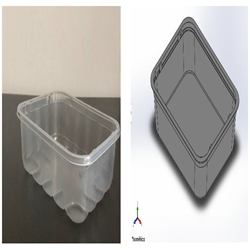The emergence of high-strength graphene marks a new milestone in the material science field. With only a small percentage inclusion into the matrix system, this organic nanoparticle could tremendously improve the strength in vast arrays of composites. At the same time, there is a growing interest in using the low-cost, lightweight, and high early strength geopolymer as the new binder for concrete. Compared to the traditional Ordinary Portland Cement (OPC), geopolymer emits 80% less CO2 during its production while exerting similar strength. Thus, the geopolymer has the potential to commercialize as new and green concrete. Geopolymer is a mixture of aluminosilicate powders and alkaline solutions. When incorporated with nano-sized graphene, the material forms a composite known as Graphene Reinforced Geopolymer Nanocomposite (GRGN). The addition of graphene enhances the strength of geopolymer, which can further improve its competitiveness. However, this depends on several factors, including the types of graphene, the surface modification of graphene, and the concentration of alkaline solutions. Generally, the presence of graphene alters the porous structure of geopolymer into a substantially filled porous structure, thus increasing compressive strength and flexural strength. On the other hand, Graphene Oxide (GO) undergoes a chemical reduction in the alkaline solution, producing epoxy functional groups. The chemical treatment results in two conditions which are weak interaction between graphene and geopolymer matrix, and better graphene dispersibility in geopolymer matrix. This review also highlights the analytical modelling aspect of GRGN. The dissolution of Si(OH)4 and Al(OH)4- from the aluminosilicate source was consistent with experimental work and analytical modeling, while the dissolution of Si–OH on the surface-modified graphene indicated otherwise. Therefore, this paper will provide an insightful review of the GRGN mechanical properties.
*Find the full paper https://www.frontiersin.org/articles/10.3389/fmats.2021.661013/full
Date of Input: 31/05/2023 | Updated: 31/05/2023 | roslina_ar
MEDIA SHARING























